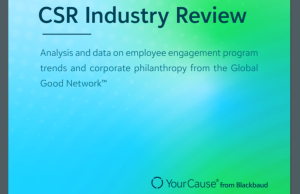The coronavirus pandemic wrought changes throughout the U.S. and world economy. That’s long been obvious. Likewise, work-from-home arrangements have come to the broader nonprofit sector just as they have in other areas of the economy. But just how common is it? Almost 60% of nonprofits offer flexible work arrangements or a hybrid workplace.
More importantly, how much have nonprofit salaries changed since the pandemic after hearing so much about “The Great Resignation” and employees jumping ship for better opportunities and/or more pay? Organizations reported overall average salary increases of almost 6% for all staff last year and projections exceeding 5%in the current year while executives saw an average hike of 5.72%.
Those are just some of the comparative data found in The NonProfit Times’ 2023 Nonprofit Organizations Salary and Benefits Survey, authored and administered in partnership with Roswell, Georgia-based Bluewater Nonprofit Solutions. The annual report provides comprehensive and wide-ranging data about salaries and benefits from hundreds of nonprofits around the United States to compare peer organizations and this year includes fields that display a change in data from 2021 to 2023 for a quick reference of the differences since the pandemic started.
The 572-page salary report and companion 169-page benefits report is bursting with data that nonprofits will find relevant, from average salaries for a specific position or how common a post is among nonprofits to the types of benefits that are found at peer organizations. Job descriptions are included for easy position matching so you can compare your organization to your peers and examine comparable positions for differences and similarities.
The report features average salaries and salary increases for 232 specific job titles within 28 job families, and information on the whole spectrum of benefits, including health, dental, vision and retirement plans. Data are broken down by field of work, budget size and other key metrics, as well as providing average, minimum, maximum, median and key percentiles within each category of compensation or benefits.
Almost 750 organizations responded to this year’s survey ranging from local and regional organizations to large, national nonprofits and/or chapter affiliates. Participation in the survey was open to all U.S. nonprofits with at least one full-time employee, working no less than 30 hours per week. Salary data for part-time positions was not collected but data can be used as a starting point to determine part-time pay based on a percentage of base salary represented.
Data were collected through an online questionnaire with nonprofits completing the survey between Sept. 15 and Dec. 7, 2022. Participants were asked to register and verify that they were authorized by their organizations to complete the survey, prior to completing the questionnaire.
Detailed information on benefits and salaries is available for 232 different positions found at nonprofits, from top to bottom, spanning entry-level posts all the way to chief executive officer and executive directors. Positions are organized by 28 different job families, allowing comparisons on the cost of each area of the operation, with minimums, maximums, and by key percentile (25th, 75th and 50th), as well as total cash compensation as a percentage of the operating budget, for each job family.
Chief Executive Salaries, Benefits
The average base salary for a chief executive officer/president/executive director last year was $150,471. The median salary was $125,000 and the maximum was $859,455. The average tenure for a CEO was almost 13 years and just about 45% of organizations paid their CEO some type of bonus. The CEO wasn’t the position with the highest average annual base salary. That would be chief medical officer although it was not nearly as common as CEO.
Almost one in seven nonprofits offer executives some form of executive benefit, the most common last year being a car or car allowance (47%).
Nonprofit managers reported awarding overall average salary increases of 5.96% for all staff, with a projected 5.1% in the current year. Executives saw an average hike of 5.72% in the prior year.
Overall, employee turnover among organizations was an average of 13.6% with employees spending an average 6.8 years at an organization. These averages Of course, employee compensation is about two things: salaries but also benefits. Perhaps nowhere has the pandemic impacted the workforce more than benefits such as flextime and hybrid workplace.
Survey results show that nonprofits are increasingly offering flexible work arrangements, with 57.8% offering flextime and 56.1% offering a hybrid workplace. Other popular benefits include subsidized training and professional development (46.6%), remote worksites (42.5%), and employee assistance plans (40.6%).
In terms of financial benefits, 36.1% offer a healthcare Flexible Spending Account (FSA) while 34.4% offer free or subsidized parking. This data suggests that nonprofits are prioritizing work-life balance and employee development, while also offering financial benefits to attract and retain top talent.








